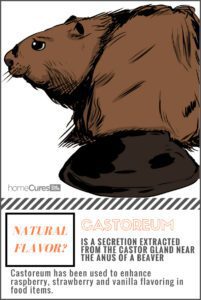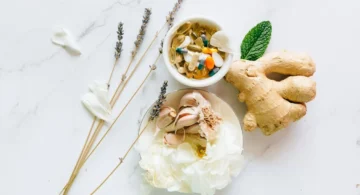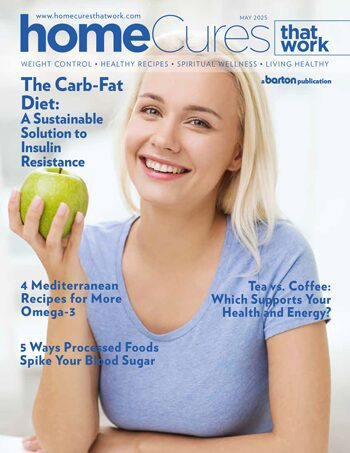Is “Natural Flavor” Unnatural?
Aretha Franklin sang, “You make me feel like a natural woman.” The film, The Natural, followed Roy Hobbs’ amazing rise to baseball fame by means of his natural talents. We also admire the Seven Natural Wonders of the World.
From these examples, one would think that the word natural refers to things in nature that are untouched, or intrinsically good. When it comes to ingredients in food, most of us would choose a natural ingredient over an artificial one. After all, anything natural is good for you, right? Unfortunately, this is not always the case when it comes to food.
In the eyes of the FDA, the terms natural flavors and natural flavoring are somewhat loosely regulated. Natural flavoring consists of, “the essential oil, oleoresin, essence or extractive, protein hydrolysate, distillate, or any product of roasting, heating or enzymolysis, which contains the flavoring constituents derived from a spice, fruit or fruit juice, vegetable or vegetable juice, edible yeast, herb, bark, bud, root, leaf or similar plant material, meat, seafood, poultry, eggs, dairy products, or fermentation products thereof, whose significant function in food is flavoring rather than nutritional.”[1]
In layman’s terms, natural flavors are extracted from or engineered from something that was originally found in nature – and added back into the food. This is what distinguishes natural flavors from artificial ones. Artificial flavors have been manufactured or synthesized in a laboratory using chemicals. Artificial flavors are man-made, test-tube flavors.
How widespread is the use of natural flavorings? In the database of over 80,000 processed foods, natural flavoring is the fourth most commonly listed ingredient. It’s only surpassed by: salt, water, and sugar.[2]
A key to understanding natural flavors is to recognize that they’re only found in processed foods. There’s no natural flavoring in a banana, an apple, an egg, or a carrot. Any whole food like those listed are free of such additives. But even a processed food labeled “organic” can have natural flavoring in it as long as the natural flavoring is derived from an organic food source.
In the labeling of organic natural flavors, you might find: “natural blueberry flavor,” or “natural vanilla flavor,” etc.
Natural flavoring, by itself, is a catch-all term. If you see it on the ingredient label of a food item, you don’t really know for sure what you’re eating. On the other hand, you can be sure that the flavoring originally came from something “natural.” Still, David Andrews, PhD, and senior scientist at the Environmental Working Group, explains that even a natural flavor could contain anywhere from 50 to 100 ingredients.[3]
Oddly, natural flavors in a processed food may have nothing whatsoever to do with that particular food, like wine that is flavored with the byproducts of fish or eggs.[4]
Another issue is that natural ingredients can contain “solvents and preservatives.” But we’re assured that the amounts of these are too miniscule to cause any health issues.[5]
Why Add Natural Flavors at All?
We consumers are largely to blame for the fact that natural flavoring has found its way into so many of our processed foods. The reason for this is that we favor flavor. We like good taste. And consistency of flavor is important to us.
Orange juice is a good example of this. If you were to purchase two organically grown oranges in the grocery store, the flavor of the two oranges may vary slightly. While we tend to tolerate those variations in whole foods, we’ve come to expect and desire consistency when we pick up a bottle of orange juice. Manufacturers maintain that consistency of flavor by adding natural flavoring.[6]
Another subtle issue with natural flavorings is that they’re often added to processed foods to enhance an existing flavor. The danger of such flavor enhancement is that it may cause cravings for that food that can lead to over-eating. This is one of the problems with processed foods like breakfast cereals and many snack foods.
Yet another reason we find natural flavorings in processed foods is that they replace or restore real flavor that was lost in the processing of that food.
Similarly, natural flavorings offer an enticing aroma and a spike to the taste buds that leave us wanting more.[7]
What about Gross Natural Flavorings?
If you research natural flavorings on the web, you’ll no doubt see articles referring to castoreum. What is castoreum? It’s a secretion extracted from the castor gland near the anus of a beaver! You read that right. The truly crazy thing is that it apparently smells…and tastes really good (so I’ve been told) and has been used to enhance raspberry, strawberry and vanilla flavoring in food items.
The question I have is who was the person who was originally crazy enough to taste a secretion from a sac near a beaver’s butt?!The FDA considers castoreum a “generally-recognized-as-safe” food additive. But don’t get freaked out over the possibility of eating beaver tush in your yogurt. While there is a Swedish schnapps called baverhojt that’s flavored with castoreum, castoreum is too rare and expensive to add to our everyday foods.[8]
GRAS Food Additives
GRAS is an acronym for “Generally Recognized as Safe” and much of what goes into natural flavorings falls into the GRAS category. Around 3,000 food additives come under the umbrella of GRAS. As long as natural flavorings are in the GRAS listing, food manufacturers are not required to disclose these ingredients. Hence the use of the generic term natural flavorings.[9]
What we don’t know and what the FDA has not studied is the long-term impact of consuming many of these GRAS ingredients in conjunction with each other. The Government Accountability Office, an investigative arm of Congress, does not believe that the FDA’s processes adequately “ensure the safety of all new GRAS determinations,” nor “the continued safety of current GRAS substances.”[10]
What Are We to Do?
Perhaps those reading this article fall into several categories:
- The purists who don’t want anything to do with either natural or artificial flavors
- The cautious, who read labels and are picky about which natural flavorings they consume
- The skeptics, who might argue, “Natural flavors haven’t hurt me yet!”
- The carefree, who throw caution to the wind and enjoy their food laden with natural flavors!
Whatever group you align yourself with, I hope you take your health and that of your loved ones to heart. So, here’s a simple 5-point strategy:
- Eat whole foods. To the extent possible, eat only whole foods. Whole foods contain no food additives, so you never wonder about the ingredients and what you’re putting into your body.
- Avoid processed foods. Again, to the degree possible, stay away from processed foods. These are the foods laden with natural flavors as well as a host of other unwholesome ingredients.
- Find organic processed foods. This your “out” from the previous strategy. If you must eat a processed food, try to find an organic version. This ensures that if there are natural flavors, at least they too are organic.
- Fast regularly. Fasting (abstaining from food) regularly helps remove toxins from the body and pushes the “reset” button on your system. (If you haven’t read Dr. Scott Saunders’ article on fasting in Home Cures That Work from September, you’ll want to do so!)
- Exercise regularly. A regular exercise routine, like fasting, helps eliminate toxins from the body, helps strengthen our bodies against disease, and balances our health if we’ve been remiss in our eating habits.
When it comes to natural flavorings, you don’t necessarily have to clear out your pantry. But take these issues to heart and decide the best course of action for you. Remember, just like a beaver’s butt, “natural” is not all it’s cracked up to be.
Something else that can be complicated: alternative sweeteners. Here’s everything you need to know about natural sugar substitutes. Or, you can just stop eating sweets completely by following a few simple steps.

























